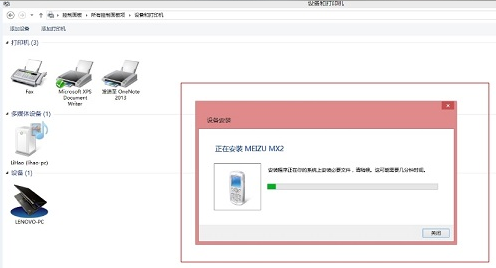I know you can edit the bash prompt permanently by editing the PS1 variable in your ~/.bashrc file, mine looks like this:
PS1="\[\e[0;31m\]<HERP(._.)DERP>\[\e[0;0m\]";
but can you set a tiny little image in there as well? For instance, if I wanted to add a little American flag icon, or something before "HERP(._.)DERP", could I do this?
Sorry, no. Terminals don't do graphics.
For a full description of what you can do, see the PROMPTING section of the bash(1) man page:
PROMPTING
When executing interactively, bash displays the primary prompt PS1 when it is ready to read a command, and the secondary prompt PS2 when it needs more input to complete a command. Bash allows these prompt strings to be customized by inserting a number of backslash-escaped special characters that are decoded as follows:
\a an ASCII bell character (07)
\d the date in "Weekday Month Date" format (e.g., "Tue May 26")
\D{format}
the format is passed to strftime(3) and the result is inserted into the
prompt string; an empty format results in a locale-specific time
representation. The braces are required
\e an ASCII escape character (033)
\h the hostname up to the first ‘.’
\H the hostname
\j the number of jobs currently managed by the shell
\l the basename of the shell’s terminal device name
\n newline
\r carriage return
\s the name of the shell, the basename of $0 (the portion following the final
slash)
\t the current time in 24-hour HH:MM:SS format
\T the current time in 12-hour HH:MM:SS format
\@ the current time in 12-hour am/pm format
\A the current time in 24-hour HH:MM format
\u the username of the current user
\v the version of bash (e.g., 2.00)
\V the release of bash, version + patch level (e.g., 2.00.0)
\w the current working directory, with $HOME abbreviated with a tilde (uses the
value of the PROMPT_DIRTRIM variable)
\W the basename of the current working directory, with $HOME abbreviated with a
tilde
\! the history number of this command
\# the command number of this command
\$ if the effective UID is 0, a #, otherwise a $
\nnn the character corresponding to the octal number nnn
\\ a backslash
\[ begin a sequence of non-printing characters, which could be used to embed a
terminal control sequence into the prompt
\] end a sequence of non-printing characters
The command number and the history number are usually different: the history number of a command is its position in the history list, which may include commands restored from the history file (see HISTORY below), while the command number is the position in the sequence of commands executed during the current shell session. After the string is decoded, it is expanded via parameter expansion, command substitution, arithmetic expansion, and quote removal, subject to the value of the promptvars shell option (see the description of the shopt command under SHELL BUILTIN COMMANDS below).
The \e, \[ and \] escape sequences deserve special attention. With these you can insert ANSI escape codes to command the terminal to change foreground color, background color, move the cursor, erase parts of the screen, and do other fancy tricks.
That is, for instance, how your prompt changes color. \[\e[0;31m\] sets the foreground color to red, and \[\e[0;0m\] resets it back to the default.
Actually, Yes, you can.
In recent versions of Bash, at least 4 (i could do it in 4.2 and 4.3),
you can render emoji with the hex.
Use the echo -e flag.
paste an emoji you looked up in and do a hexdump to see what it's made of:
plasmarob ~ $ echo -n "





